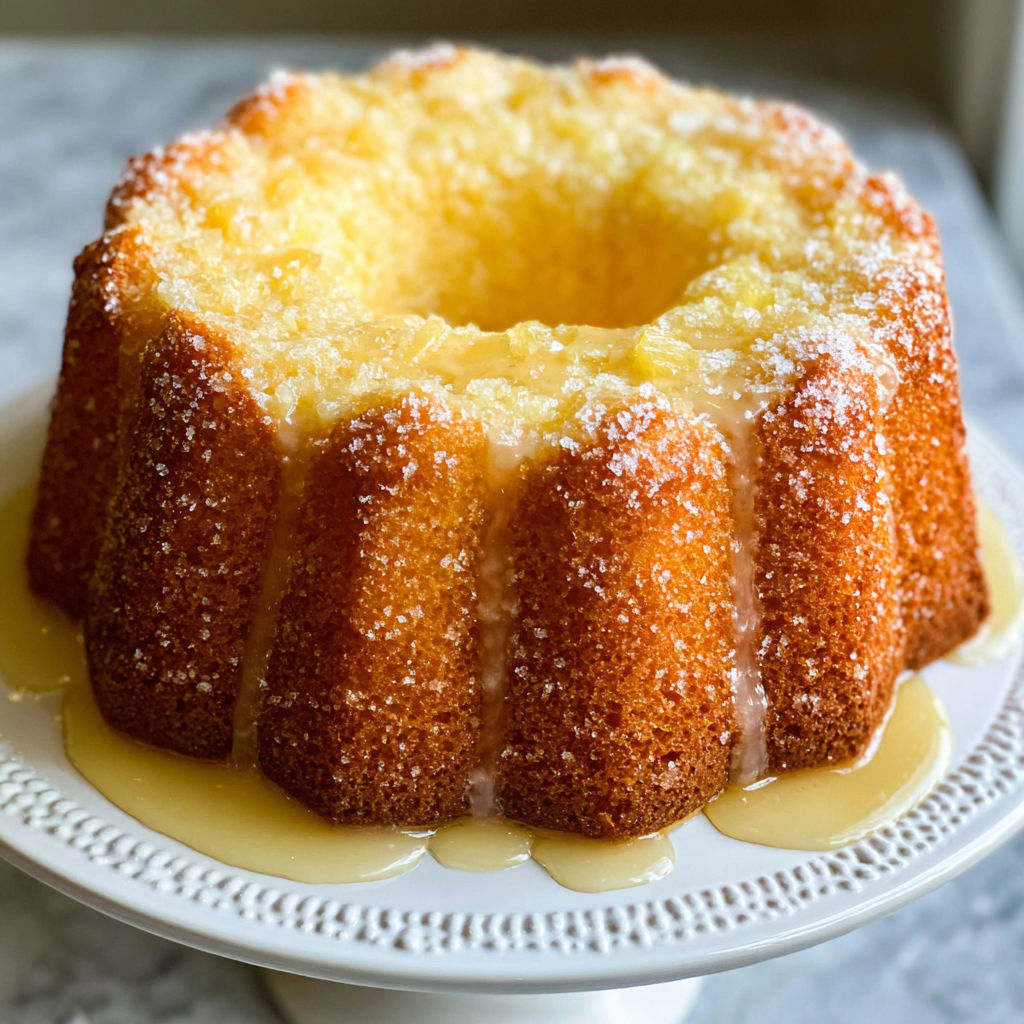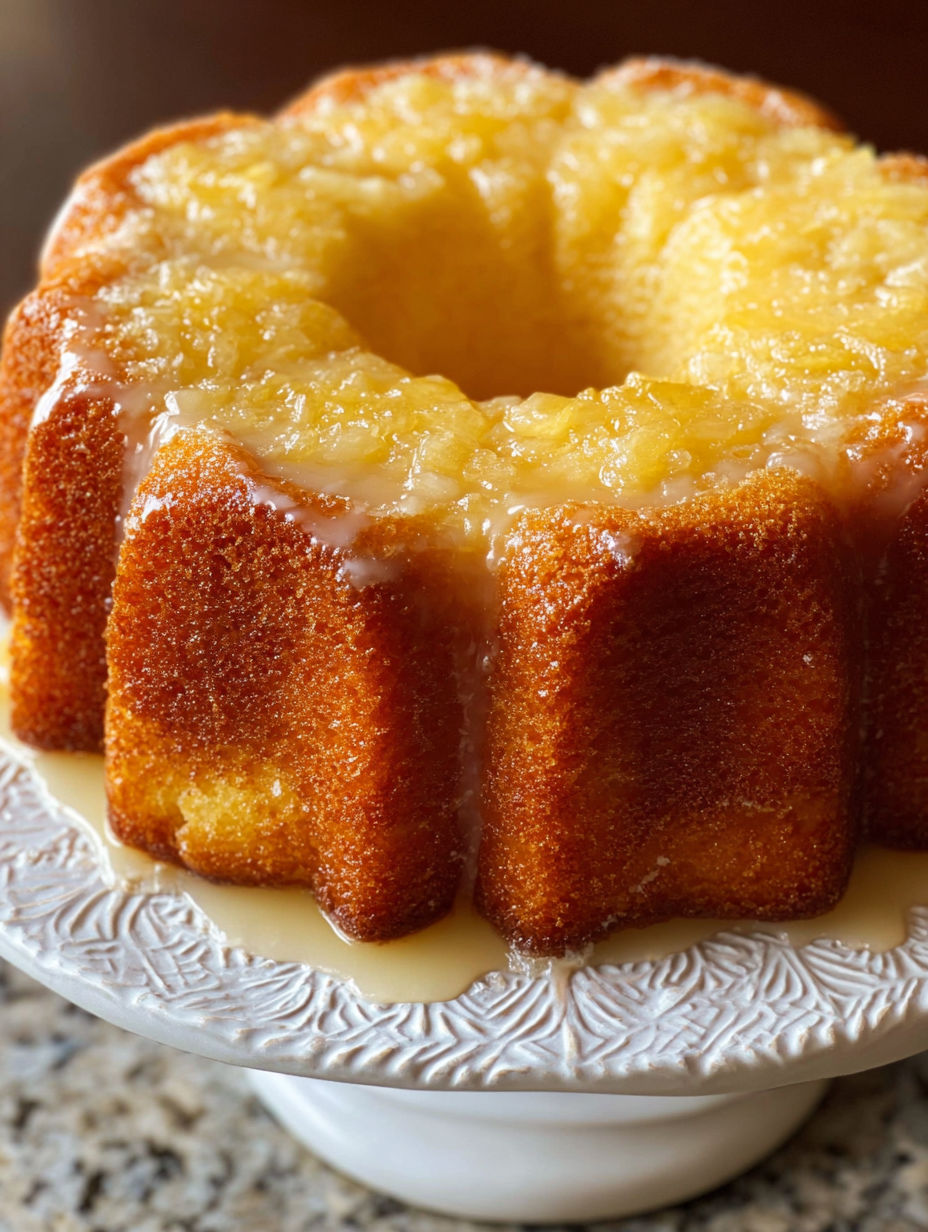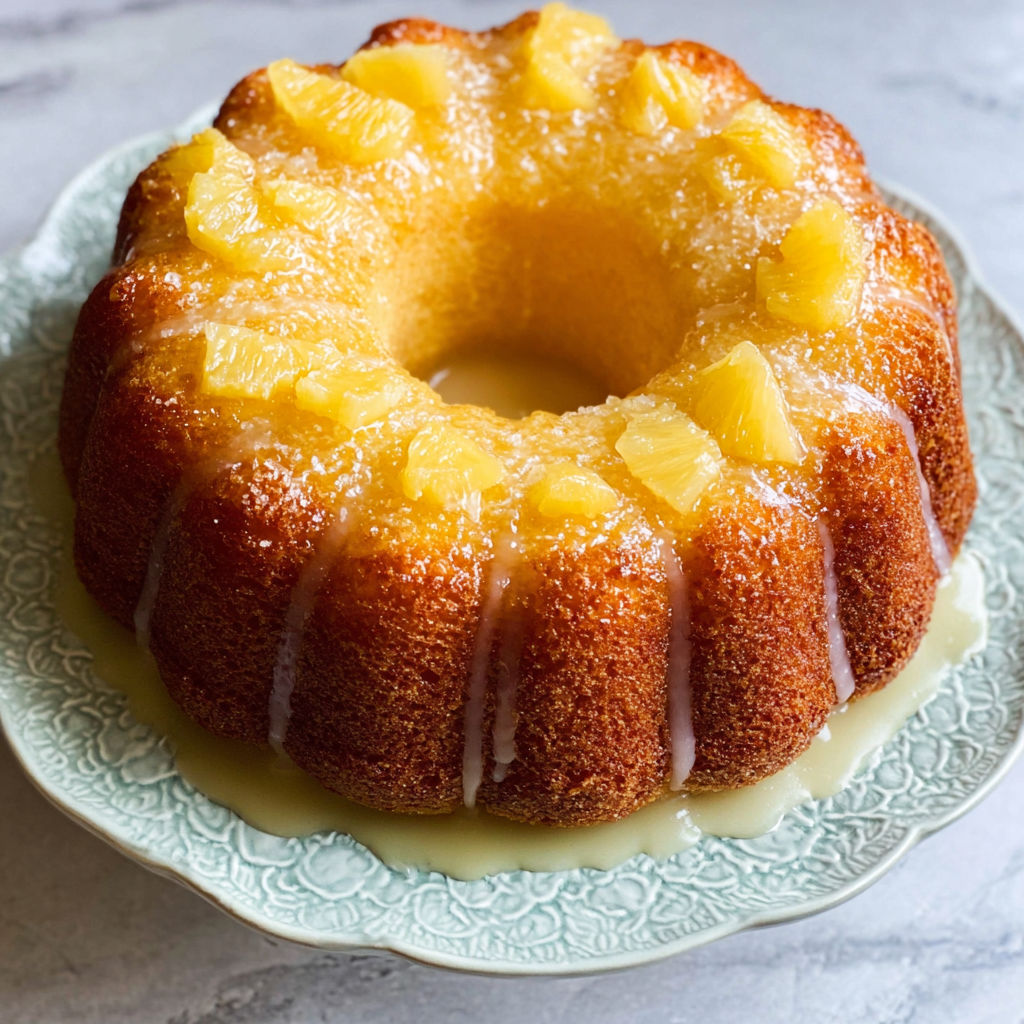 Pin
Pin
This moist pineapple pound cake transforms ordinary gatherings into memorable occasions with its perfect balance of tangy pineapple and buttery richness. The tender crumb and tropical flavor bring a taste of sunshine to any dessert table, while the sweet glaze adds just the right finishing touch.
I first made this cake for my mother's birthday after she mentioned missing the pineapple cakes from her childhood. The look on her face when she took that first bite was priceless. Now it has become our family's most requested celebration cake.
Ingredients
- Unsalted butter: adds richness and helps create that distinctive pound cake texture
- Granulated sugar: provides sweetness while helping create air pockets during creaming
- Large eggs: give structure and richness to the cake
- Vanilla and almond extracts: enhance the flavor profile without overpowering the pineapple
- All purpose flour: provides the perfect structure for this dense yet tender cake
- Baking powder: offers just enough lift without making it too cakey
- Fine salt: balances the sweetness and enhances all flavors
- Sour cream: adds incredible moisture and a subtle tang that complements the pineapple
- Crushed pineapple: brings tropical flavor and keeps the cake moist for days
- Pineapple juice: intensifies the fruit flavor in both cake and glaze
- Powdered sugar: creates a smooth glaze that sets beautifully
How To Make Pineapple Pound Cake
- Prepare the pan:
- Thoroughly grease and flour your Bundt pan, ensuring you reach every ridge and crevice. This is critical for a clean release later. I learned that a light coating of butter followed by a dusting of flour works better than baking spray for this particular recipe.
- Create the base:
- Beat the softened butter and sugar for a full 5 minutes until notably pale and fluffy. This step incorporates air into the batter which is essential for the proper rise and texture. You cannot rush this process as it builds the foundation for your entire cake.
- Build the structure:
- Add eggs one at a time, allowing each to fully incorporate before adding the next. This prevents the batter from breaking and ensures proper emulsification. The vanilla and almond extracts should be added now to distribute their flavors throughout the base.
- Develop the framework:
- Whisk your dry ingredients separately to ensure the leavening agents are evenly distributed. This prevents bitter spots and ensures consistent rise throughout the cake. When adding these dry ingredients, alternate with the sour cream, beginning and ending with flour. This method prevents gluten development while maintaining a smooth batter.
- Introduce the star ingredient:
- Fold the well drained pineapple gently into the batter using a wide spatula with a cutting motion rather than stirring. This preserves the air bubbles you worked to create earlier. The pineapple must be very well drained to prevent excess moisture that could make your cake soggy.
- Bake with precision:
- Pour the batter into your prepared pan and smooth the top gently. Tap the pan a few times on the counter to release any large air bubbles. Bake at the specified temperature until a wooden pick comes out clean, typically 60 to 70 minutes depending on your oven.
- Perfect the finish:
- Allow the cake to cool in the pan for exactly the time specified. Too short and it may break, too long and it might stick. When making the glaze, add pineapple juice gradually until you reach a consistency that will coat the back of a spoon but still flow beautifully down the sides of the cake.
The crushed pineapple is truly the heart of this recipe. I discovered its magic when comparing cakes made with fresh versus canned pineapple. The canned variety actually produced a more consistent moisture level and flavor throughout the cake. My grandmother always said a good pound cake should have a dense yet tender crumb, and the pineapple helps achieve that perfect balance.

Storage Tips
This pineapple pound cake maintains its moisture remarkably well due to the fruit and sour cream. Store it under a cake dome or in an airtight container at room temperature for up to 4 days without losing quality. For longer storage, wrap individual slices tightly in plastic wrap and place in a freezer bag for up to 3 months. Thaw wrapped slices at room temperature for about an hour before serving to maintain moisture.
Perfect Pairings
While delicious on its own, this cake reaches new heights when served with complementary elements. Try a dollop of lightly sweetened whipped cream infused with a touch of rum. Fresh berries particularly strawberries or blueberries create a beautiful color contrast and flavor pairing. For an indulgent dessert serve slightly warm with a scoop of vanilla ice cream and a drizzle of additional glaze.
Troubleshooting Tips
The most common issue with this cake is sticking to the pan. Beyond thorough greasing and flouring, allow the cake to cool for exactly 10 to 15 minutes before inverting. If your cake is browning too quickly but not cooked through, tent loosely with foil after the first 45 minutes of baking. If your glaze is too thick, add pineapple juice a teaspoon at a time. Too thin? Add more powdered sugar gradually until you reach the desired consistency.

Recipe FAQs
- → Can I use fresh pineapple instead of canned?
Yes, you can use fresh pineapple that you've crushed yourself. Just make sure to drain it thoroughly as excess moisture can affect the cake's texture. You may need to add a bit more sugar if your fresh pineapple isn't as sweet as canned varieties.
- → How do I properly drain the crushed pineapple?
Place the crushed pineapple in a fine-mesh strainer over a bowl and press gently with the back of a spoon. Save the drained juice for the glaze and the small amount needed in the cake batter. For best results, let it drain for about 15 minutes.
- → Can I make this cake a day ahead?
Absolutely! This pound cake actually develops even better flavor when made a day ahead. Store it covered at room temperature for up to 2 days, or refrigerate for up to 5 days. You can apply the glaze shortly before serving for the freshest presentation.
- → What can I substitute for sour cream?
Greek yogurt works as an excellent substitute in equal amounts. You could also use crème fraîche or full-fat plain yogurt. Each alternative will provide the necessary moisture and tang, though with subtle flavor differences.
- → Why is my cake sticking to the Bundt pan?
Thorough greasing and flouring is crucial for Bundt pans with their detailed crevices. Use butter or shortening (not spray) to grease every surface, then dust with flour. Allow the baked cake to cool for exactly 10-15 minutes before turning out—too short or too long can cause sticking.
- → Can I freeze this pound cake?
Yes, this cake freezes beautifully for up to 3 months. Wrap the unglazed cake tightly in plastic wrap, then in aluminum foil. Thaw overnight at room temperature and add the glaze fresh after thawing for best results.
